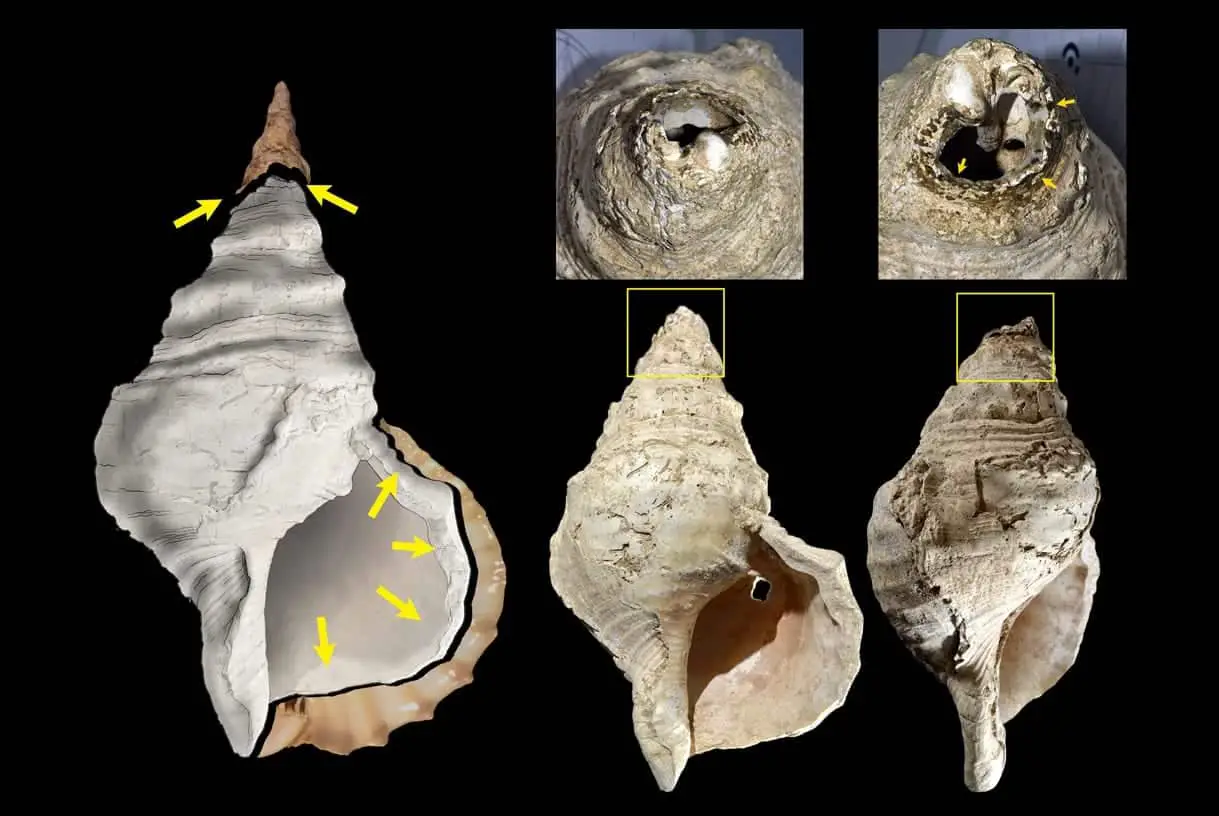For the first time in more than 17,000 years, three mellifluous musical notes – close in tone to C, D, and C sharp – have reverberated from a conch shell modified to serve as a wind instrument.
The specimen, archaeologists have now determined, is the earliest conch shell horn yet known, and stands out as a unique find among European Upper Paleolithic artifacts. First found in 1931 in the cave of Marsoulas, nestled in the foothills of the French Pyrenees, the discoverers initially suspected the shell served as a ceremonial drinking cup, and noted no discernable modifications by human hands.
But after looking at the shell with fresh eyes – and advanced imaging techniques – Carole Fritz and colleagues determined that the Magdalenian occupants of Marsoulas cave had carefully modified the shell to install a mouthpiece.
These ancient craftspeople also removed the outermost edges of the shell’s labrum, the flared ridge that extends outward from the shell’s main opening, and adorned the exterior of the shell with ochre-red pigment designs that match the style of wall art found inside Marsoulas cave.
Previous work has documented the presence of flutes and whistles made of bone in Upper Paleolithic archaeological sites. But instruments made of other materials such as this shell, which once belonged to a large sea snail of the species Charonia lampas, are unusual.
Using photogrammetry techniques to highlight exterior modifications not readily seen with the naked eye, Fritz et al. painstakingly characterized the traces of human intervention. They noted the fingerprint-shaped, faded ochre markings, impact points along the modified labrum, and signs that the shell’s apex had been carefully and deliberately removed to create a second opening.
They also noted traces of a brown organic substance, likely a resin or wax, around the apex opening that may have been used as an adhesive to affix a mouthpiece. They then used CT scans to visualize the shell’s interior, finding that two additional holes had been chipped away in the spiral layers directly beneath the shell’s apex, likely to accommodate the mouthpiece’s long tube extension.
Fritz et al. then enlisted the help of a musicologist who specializes in wind instruments, who was able to reproduce the sound of the horn in three distinct notes that nearly matched the tones of C, D, and C sharp in modern musical nomenclature. “Around the world, conch shells have served as musical instruments, calling or signaling devices, and sacred or magic objects depending on the cultures,” the authors write. “To our knowledge, the Marsoulas shell is unique in the prehistoric context, however, not only in France but at the scale of Paleolithic Europe and perhaps the world.”
Header Image Credit : AMERICAN ASSOCIATION FOR THE ADVANCEMENT OF SCIENCE





